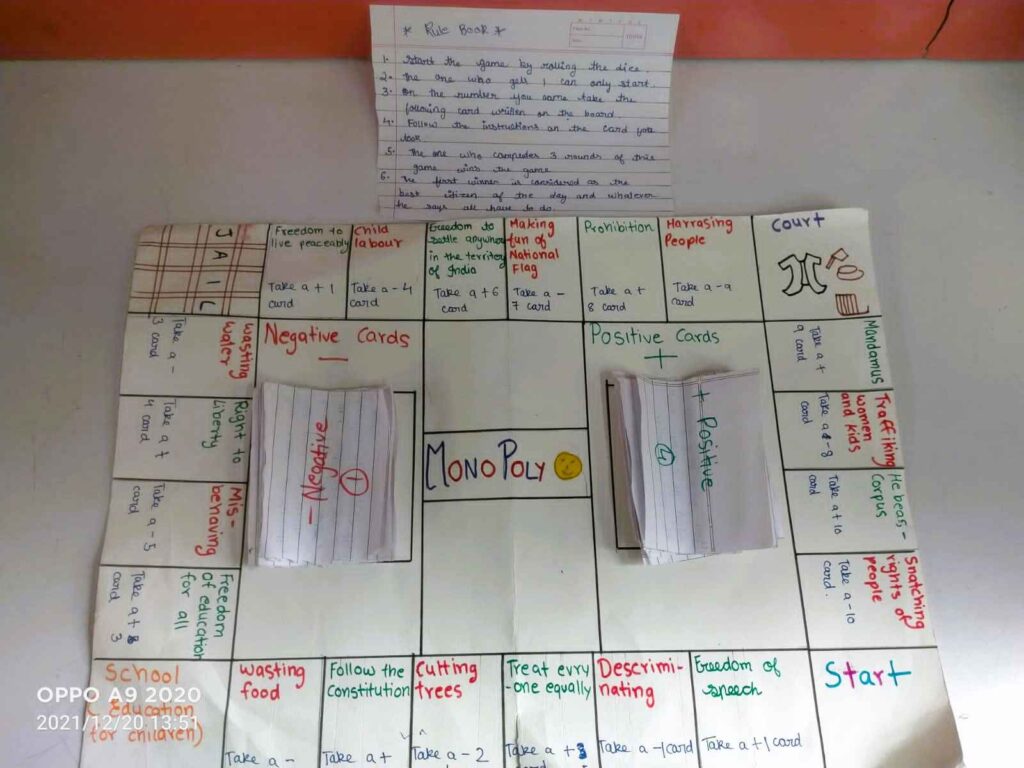How many of us know that practicing a language one likes is not a crime? Or, for that matter we as an individual have the right to chance upon any opportunity that might result in the betterment of our life?
The possibility of getting the responses for the above questions will be in 50-50 which when translated means half of the population might know about it and half might not.
Now if I ask, how many of us know that food is the answer for hunger? Or water is life or for that matter Nature is a healer?
The obvious answer that one will hear is – yes, we know.
The point that I want to make by stating the above cases is that the things that we get to experience at a personal level leaves a deep impression on our mind which results in long term retention of the information. The things which we are not able to experience at a personal level always leaves us clueless as a result of which we fall in the 50-50 category. We all know the 50-50 situation leads to chaos. As an educator this has become one of the concerns for me while I was about to begin the topic – Fundamental Rights and Fundamental duties. No doubt that there are tons of quality resources available to teach this topic and I did use them in my class, just to list down the fundamental rights and duties. But let’s be honest to ourselves and ask – is just remembering them enough? If yes, then how long are we going to retain them or understand their importance in real life situations? If these questions made you stop and think for a while then it’s a sign that there is a lot more scope and possibilities to do a topic with the students with the objective of : experiencing the Fundamental Rights and Fundamental duties at a personal level.
Wondering what’s this, experiencing the Fundamental Rights and Fundamental duties at a personal level? Well, it means learning by doing.
Here is how I put this thought into action:
- First thing first, I introduced this topic to my students with one simple activity of comparing people’s lives in pre-independence era and post independence era. To do so, I had given them pointers: [ 1. How was people’s life in both eras? Why? 2. How were they treated in both eras?] which provided them the direction to think along that path, this was necessary to cut down the not so relevant points.
- Thinking- comparing- jotting the points gave them the sense of relation between the quality of life people experienced in pre- independence era and post independence era. Taking the opportunity of their response I introduced to them the six fundamental rights , with the help of the resources available on Tata ClassEdge.
- Doing fundamental rights without touching upon the fundamental duties is just like a half baked bread that will surely leave us with a bad taste. The same way, just knowing rights will not help us to enjoy the rights to the fullest because rights can only be enjoyed to the fullest when we fulfill the duties .
- To get them accustomed with the fundamental duties and show their close relation with fundamental rights, what could be a better way than illustration of exploitation of trees by humans for selfish reasons which prevent the humans from enjoying their right to freedom as a result of failing to do their duties to prevent the trees.
- This illustration was enough to establish the relation between the two after which I introduced all the listed fundamental duties to the students backed with the case study that served as evidence to support the points. This helped in establishing a concrete impression on their mind about the concept.
- After winding up our session of knowing our fundamental rights and duties, I wanted children to think about rights and duties more concretely -and explore it by creating a game.
Wondering what kind of game? The most trendy one in recent past years , yes you got it correct- Snakes and ladders. This process was not actually difficult as it seems to be. After a discussion with my students we zeroed in on the idea that the structure of the game could be the same. What we will modify is the elements i.e. snakes and ladders will be replaced by fundamental rights and duties.
READ MORE STORIES FROM SCHOOL
( The samples below may give you an idea as to how this game should be played to retain the fundamental rights and duties and show you how and in what way they are inseparable from each other.)

To be very honest, to think about this game and to actually create it are two different things and it really called for focus and undivided attention. Even to create the simplest version I realize my students put in a lot of effort and I sincerely appreciated it. Although the game appears to be simple to play and also few tints of imperfection may emerge as one plays it, this is no way undermines the knowledge of the students – it is just that they overlooked or could not sense those shortcomings. As their guide I took care of this concern by providing them the time to reflect on the game they created and gave them suggestions to rectify some flaws and upgrade it. This was the best possible way to show them there is always scope for improvement.
I do hope all the time that students spent in groups [discussing and listing down the fundamental duties and anti-social duties, fundamental rights, pondering over where and in which block the listed duties and rights should go, deciding on the rewards and penalties for each correct and wrong moves respectively in a way to show the relation between two] must have given them the chance to own the fundamental rights and duties and experience it at a personal level. This in turn will help them retain these rights and duties for their lifetime.
Doing this activity with my students was not only a great learning experience for them but also for me for it has made me realize that,
“An ignited mind is enough to enlighten the path of discoveries and innovation.” The below specimen is the testimony of my words. Why? Because while giving them instructions, I just talked about the snakes and ladder game but it was them who came up with a variety of board games as the one can be seen in the image below.

Contributed by Vinita Pal
Teacher | Std. 7 & 8

